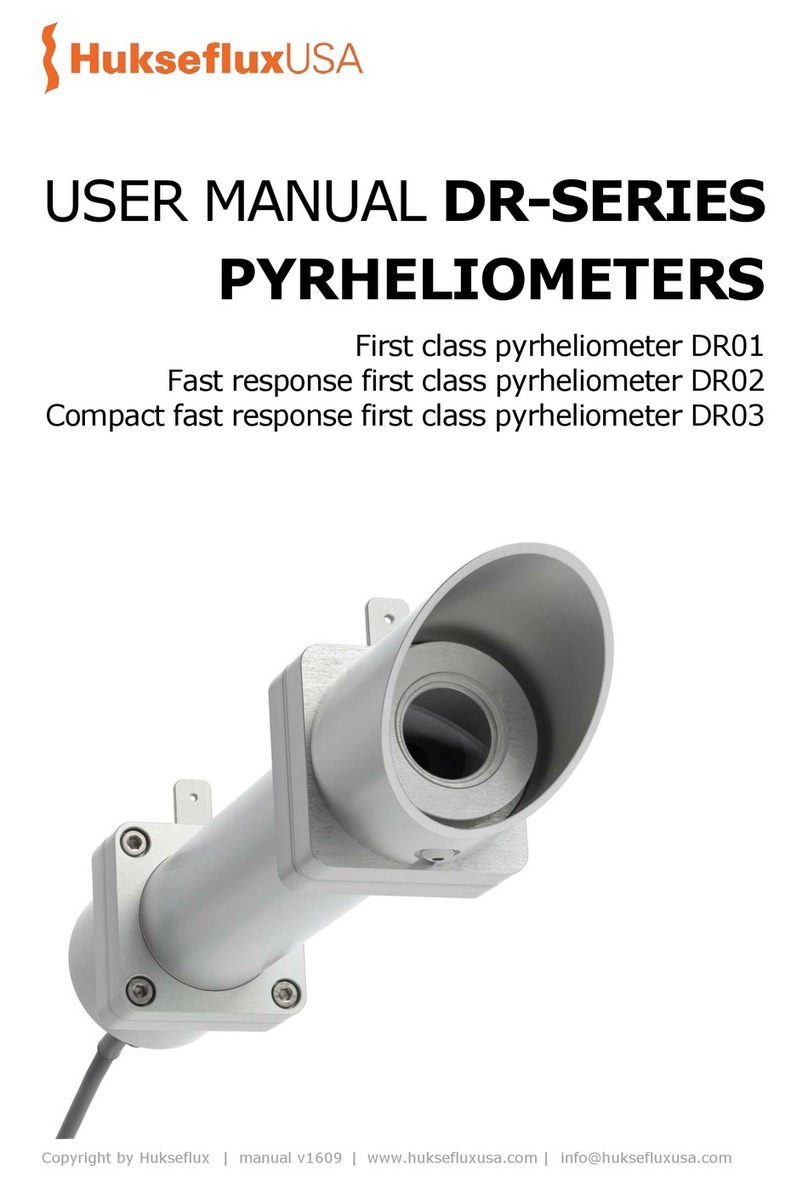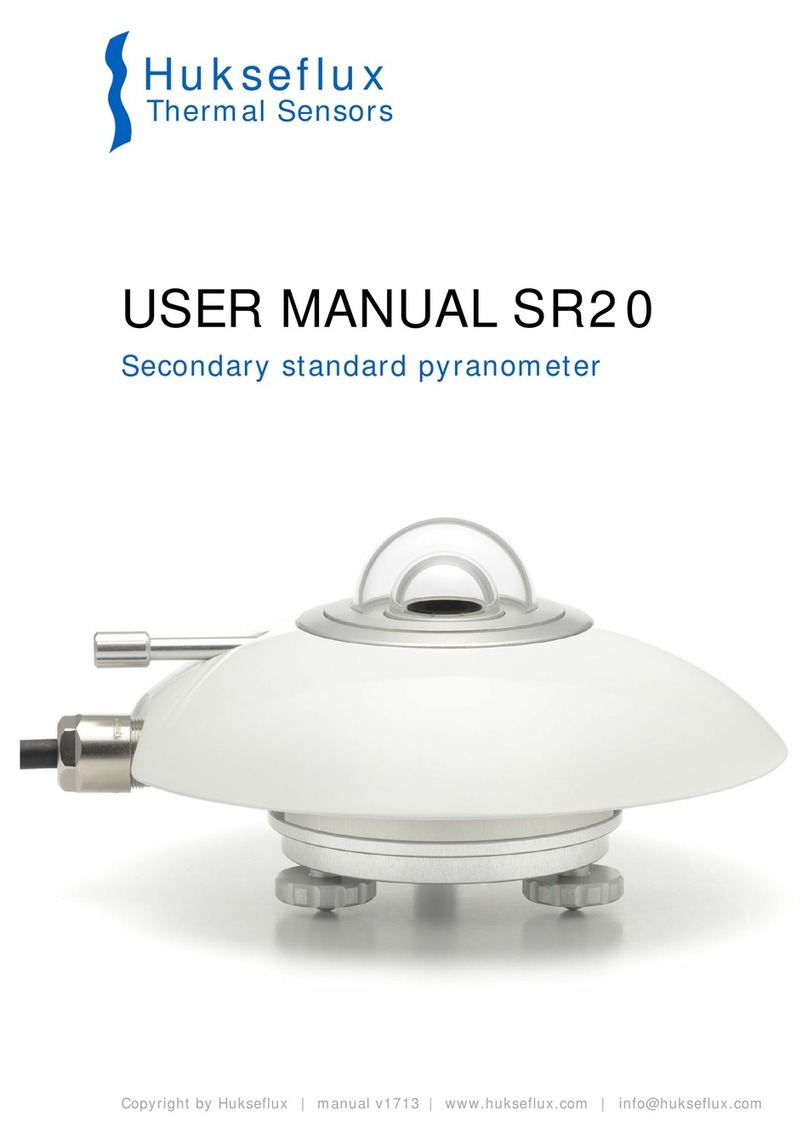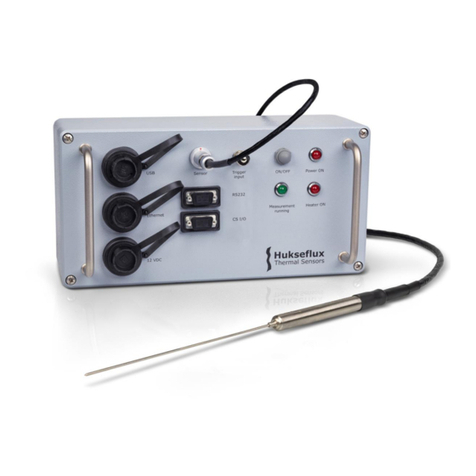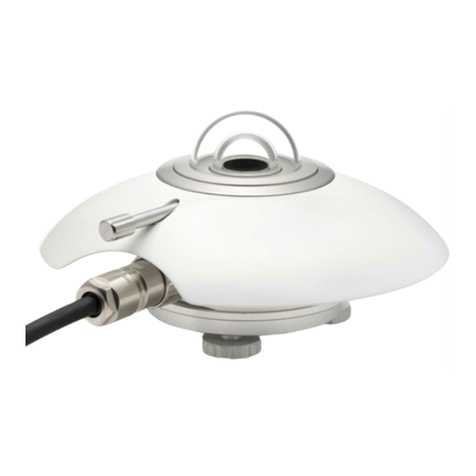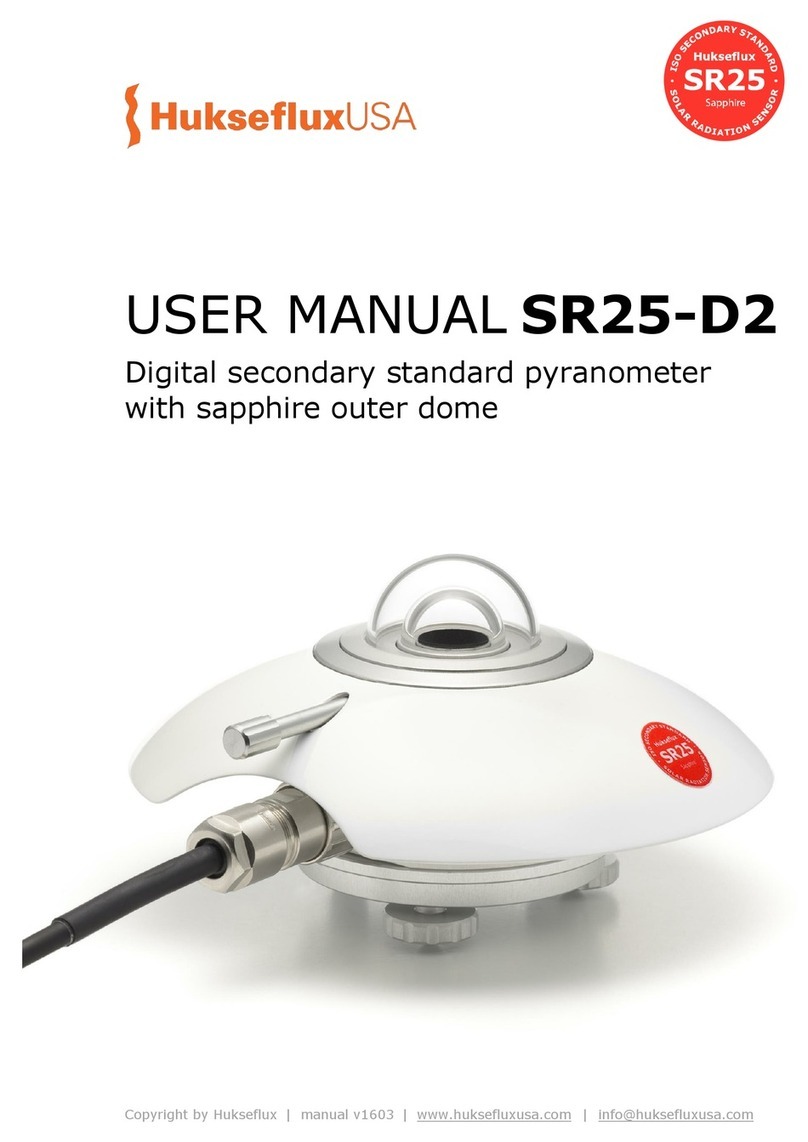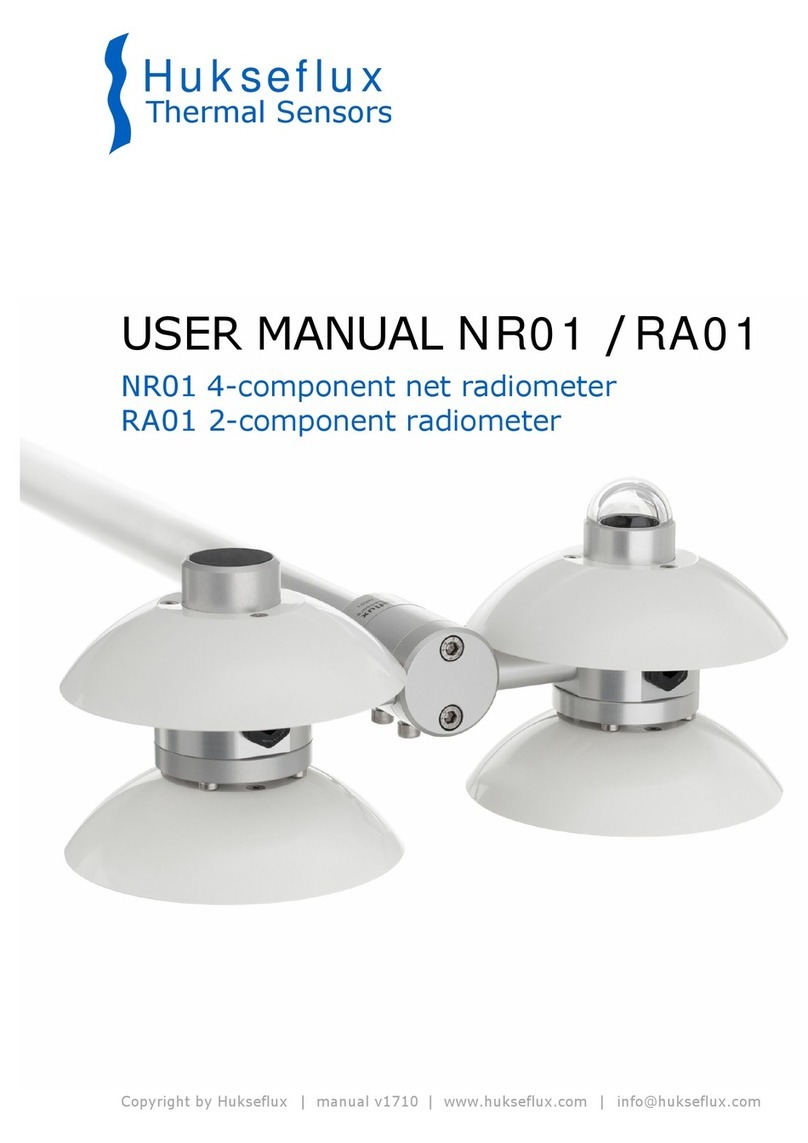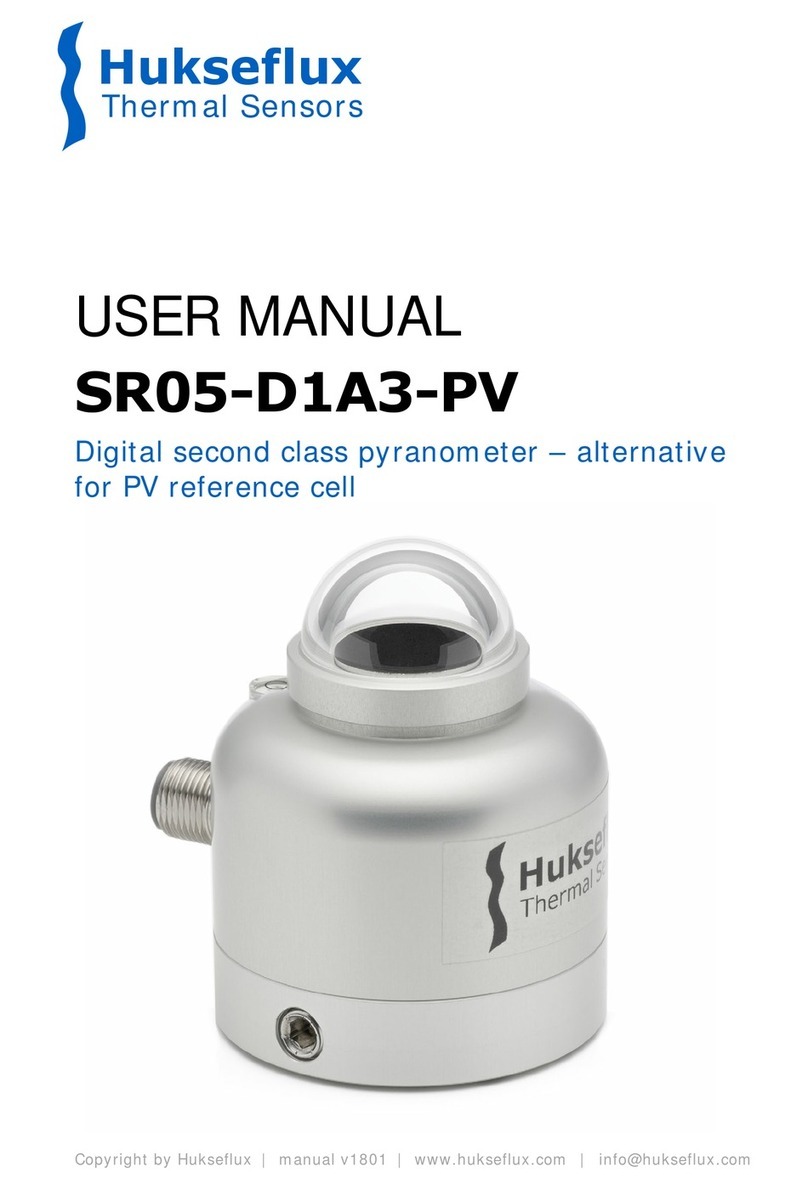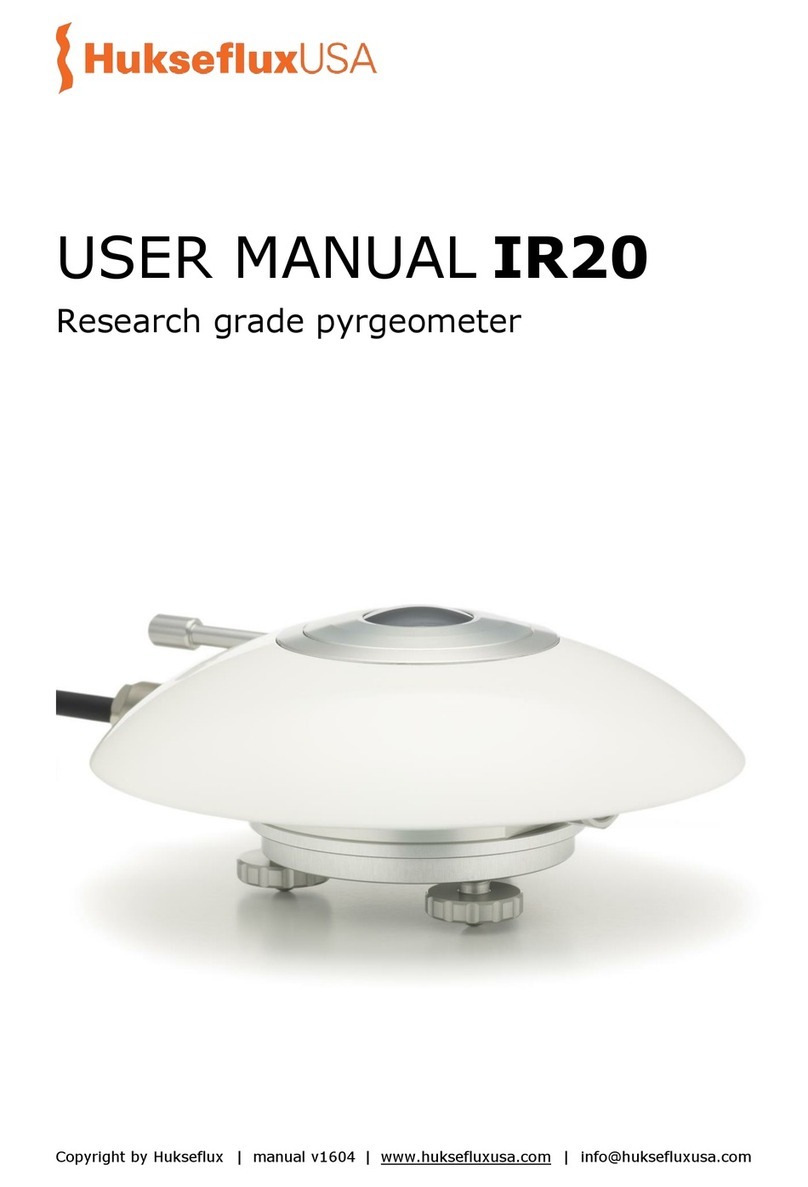SR30-D1 manual v2005 7/83
Heated for high data availability, featuring new RVH
TM technology
High data availability is attained by heating of the outer dome using ventilation between
the inner and outer dome. RVHTM - Recirculating Ventilation and Heating - technology,
developed by Hukseflux, suppresses dew and frost deposition and is as effective as
traditional ventilation systems, without the maintenance hassle and large footprint.
•low power consumption: SR30-D1 requires only 2 W, compared to 10 W for
traditional ventilation systems
•low maintenance: SR30-D1 does not require filter cleaning
RVHTM uses SR30-D1’s built-in heater and ventilator. The dome of SR30-D1 pyranometer
is heated by ventilating the area between the inner and outer dome. RVH TM is much more
efficient than traditional ventilation, where most of the heat is carried away with the
ventilation air. Recirculating ventilation is as effective in suppressing dew and frost
deposition at 2 W as traditional ventilation is at 10 W. RVHTM technology also leads to a
reduction of zero offsets.
Compliant with IEC 61724-1: 2017, Class A and B
IEC 61724-1: Photovoltaic System Performance Monitoring - Guidelines for
Measurement, Data Exchange and Analysis - requires ventilation and heating for Class A
monitoring. Only SR30 offers both, without the need for additional accessories. Most
competing pyranometers do not even comply with Class B, which requires heating.
Low cost of ownership
SR30-D1 is an affordable secondary standard instrument and is designed for low cost of
ownership, which is mainly determined by costs of installation, on-site inspections,
servicing and calibration:
•low demand on infrastructure, SR30-D1’s RVHTM requires only 2 W power, compared
to 10 W for traditional ventilation systems
•reduction of unnecessary on-site inspection by remote diagnostics
•designed for efficient servicing; easy local diagnostics
•supported by an efficient calibration and maintenance organisation. Hukseflux offers
local support in the main global economies: USA, EU, China, India, Japan and Brazil.
Recalibration is recommended every 2 years, which is good practice in the industry.
Liabilities covered: test certificates
As required by ISO 9060 for secondary standard classification, each SR30-D1 is supplied
with test results for the individual instrument:
•sensitivity
•directional response
•temperature response
•tilt angle measurement
